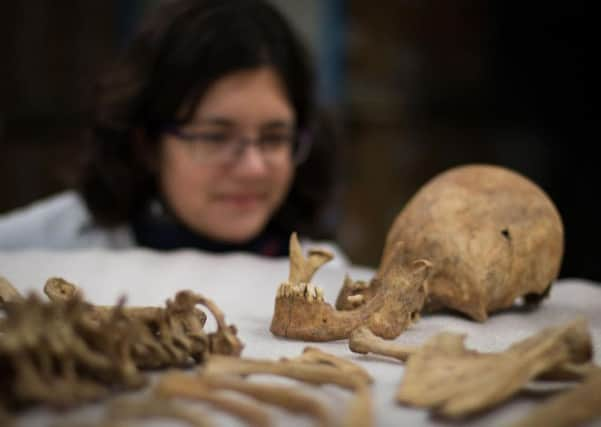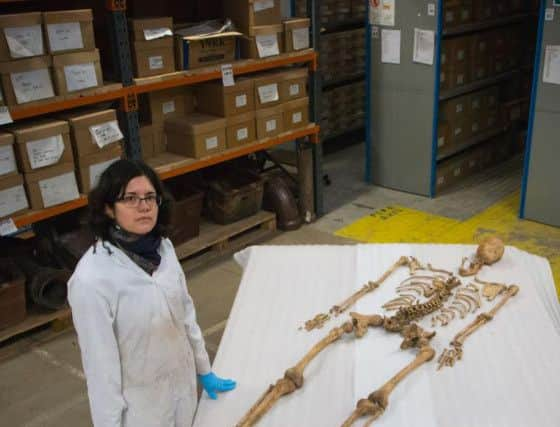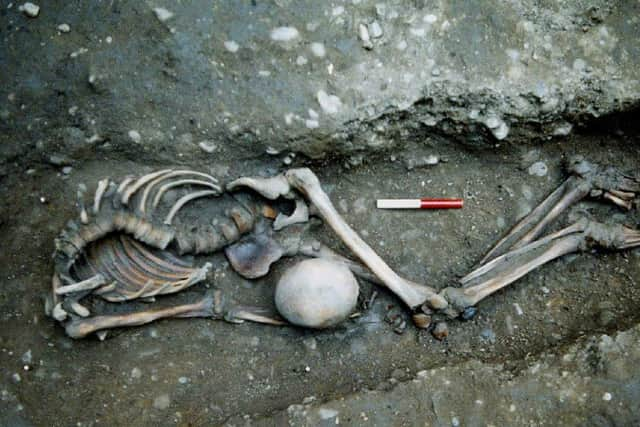How York's mysterious headless Romans may have hailed from just a few miles away


Discovered over the course of a decade, the origins of 80 Roman-age decapitated bodies found in a burial ground at Driffield Terrace, York, have since been the subject of intense study by academics and researchers.
And now, using the latest genome technology, experts have suggested that the majority may well have originally hailed from only a few miles away in Yorkshire.
Advertisement
Hide AdAdvertisement
Hide AdBut intriguingly, it appears one of the decapitated Romans was of Middle Eastern origin, growing up in the region of modern day Palestine, Jordan or Syria before migrating to northern England and meeting his death in York.


Those involved with the project say this breakthrough represents “a huge step forward in understanding populations, migration patterns and how people moved around the ancient world”.
The use of genome technology, where the complete set of DNA within an organism is analysed, has cast more light on a mystery that has perplexed archaeologists for more than a decade.
Since the 1,800-year-old skeletons were discovered, archaeologists have speculated that they belonged to gladiators, although they could also have been soldiers or criminals.
Advertisement
Hide AdAdvertisement
Hide AdSeveral suffered perimortem decapitation and were all under 45 years old. Their skulls were buried with the body, although not positioned consistently, with some on the chest, some within the legs and others at the feet.


Although examining the skeletons revealed much about the life they lived, including childhood deprivation and injuries consistent with battle trauma, it was not until the analysis by a team from Trinity College Dublin that archaeologists could start to piece together the origins of the men.
Despite evidence suggesting some of the 80 individuals lived their early lives outside Britain, most of those sampled had genomes similar to an earlier Iron Age woman from Melton, East Yorkshire.
The poor childhood health of these men suggests that they were locals who endured childhood stress, but their robust skeletons and healed trauma, suggest that they were used to wielding weapons.
Advertisement
Hide AdAdvertisement
Hide Ad“Archaeology and osteoarchaeology can tell us a certain amount about the skeletons, but this new genomic and isotopic research can not only tell us about the body we see, but about its origins, and that is a huge step forward in understanding populations, migration patterns and how people moved around the ancient world,” says Christine McDonnell, Head of Curatorial and Archive Services for York Archaeological Trust.


“This hugely exciting, pioneering work will become the new standard for understanding the origins of skeletons in the future, and as the field grows, and costs of undertaking this kind of investigation fall, we’ll be able to refine our knowledge of exactly where the bodies were born to a much smaller region. That is a remarkable advance.”
The demographic profile of the York skeletons resembles the population structure in a Roman burial ground believed to be for gladiators at Ephesus, an ancient city in Turkey’s Central Aegean region.
But the evidence could also have military implications, as the Roman army had a minimum recruitment height and fallen soldiers would match the age profile of the York cemetery.
Advertisement
Hide AdAdvertisement
Hide AdThe first genomic analysis of ancient Britons was performed at Trinity College Dublin. Professor Dan Bradley of the Molecular Population Genetics Laboratory said: “Whichever the identity of the enigmatic headless Romans from York, our sample of the genomes of seven of them, when combined with isotopic evidence, indicate six to be of British origin and one to have origins in the Middle East.


“It confirms the cosmopolitan character of the Roman Empire even at its most northerly extent.”
Rui Martiniano who undertook the analysis said: “This is the first refined genomic evidence for far-reaching ancient mobility and also the first snapshot of British genomes in the early centuries AD, indicating continuity with an Iron Age sample before the migrations of the Anglo-Saxon period.”
Professor Matthew Collins, of the BioArCh research facility in the Department of Archaeology at York, who co-ordinated the report on the research, said: “These genomes give the first snapshot of British genomes in the early centuries AD, showing continuity with the earlier Iron Age and evidence of migrations in the Anglo-Saxon period.”